Jan Hendrik Metzen
Object-Focused Data Selection for Dense Prediction Tasks
Dec 13, 2024



Abstract:Dense prediction tasks such as object detection and segmentation require high-quality labels at pixel level, which are costly to obtain. Recent advances in foundation models have enabled the generation of autolabels, which we find to be competitive but not yet sufficient to fully replace human annotations, especially for more complex datasets. Thus, we consider the challenge of selecting a representative subset of images for labeling from a large pool of unlabeled images under a constrained annotation budget. This task is further complicated by imbalanced class distributions, as rare classes are often underrepresented in selected subsets. We propose object-focused data selection (OFDS) which leverages object-level representations to ensure that the selected image subsets semantically cover the target classes, including rare ones. We validate OFDS on PASCAL VOC and Cityscapes for object detection and semantic segmentation tasks. Our experiments demonstrate that prior methods which employ image-level representations fail to consistently outperform random selection. In contrast, OFDS consistently achieves state-of-the-art performance with substantial improvements over all baselines in scenarios with imbalanced class distributions. Moreover, we demonstrate that pre-training with autolabels on the full datasets before fine-tuning on human-labeled subsets selected by OFDS further enhances the final performance.
Retinex-Diffusion: On Controlling Illumination Conditions in Diffusion Models via Retinex Theory
Jul 29, 2024Abstract:This paper introduces a novel approach to illumination manipulation in diffusion models, addressing the gap in conditional image generation with a focus on lighting conditions. We conceptualize the diffusion model as a black-box image render and strategically decompose its energy function in alignment with the image formation model. Our method effectively separates and controls illumination-related properties during the generative process. It generates images with realistic illumination effects, including cast shadow, soft shadow, and inter-reflections. Remarkably, it achieves this without the necessity for learning intrinsic decomposition, finding directions in latent space, or undergoing additional training with new datasets.
Label-free Neural Semantic Image Synthesis
Jul 01, 2024Abstract:Recent work has shown great progress in integrating spatial conditioning to control large, pre-trained text-to-image diffusion models. Despite these advances, existing methods describe the spatial image content using hand-crafted conditioning inputs, which are either semantically ambiguous (e.g., edges) or require expensive manual annotations (e.g., semantic segmentation). To address these limitations, we propose a new label-free way of conditioning diffusion models to enable fine-grained spatial control. We introduce the concept of neural semantic image synthesis, which uses neural layouts extracted from pre-trained foundation models as conditioning. Neural layouts are advantageous as they provide rich descriptions of the desired image, containing both semantics and detailed geometry of the scene. We experimentally show that images synthesized via neural semantic image synthesis achieve similar or superior pixel-level alignment of semantic classes compared to those created using expensive semantic label maps. At the same time, they capture better semantics, instance separation, and object orientation than other label-free conditioning options, such as edges or depth. Moreover, we show that images generated by neural layout conditioning can effectively augment real data for training various perception tasks.
Zero-Shot Distillation for Image Encoders: How to Make Effective Use of Synthetic Data
Apr 25, 2024



Abstract:Multi-modal foundation models such as CLIP have showcased impressive zero-shot capabilities. However, their applicability in resource-constrained environments is limited due to their large number of parameters and high inference time. While existing approaches have scaled down the entire CLIP architecture, we focus on training smaller variants of the image encoder, which suffices for efficient zero-shot classification. The use of synthetic data has shown promise in distilling representations from larger teachers, resulting in strong few-shot and linear probe performance. However, we find that this approach surprisingly fails in true zero-shot settings when using contrastive losses. We identify the exploitation of spurious features as being responsible for poor generalization between synthetic and real data. However, by using the image feature-based L2 distillation loss, we mitigate these problems and train students that achieve zero-shot performance which on four domain-specific datasets is on-par with a ViT-B/32 teacher model trained on DataCompXL, while featuring up to 92% fewer parameters.
Identification of Fine-grained Systematic Errors via Controlled Scene Generation
Apr 10, 2024Abstract:Many safety-critical applications, especially in autonomous driving, require reliable object detectors. They can be very effectively assisted by a method to search for and identify potential failures and systematic errors before these detectors are deployed. Systematic errors are characterized by combinations of attributes such as object location, scale, orientation, and color, as well as the composition of their respective backgrounds. To identify them, one must rely on something other than real images from a test set because they do not account for very rare but possible combinations of attributes. To overcome this limitation, we propose a pipeline for generating realistic synthetic scenes with fine-grained control, allowing the creation of complex scenes with multiple objects. Our approach, BEV2EGO, allows for a realistic generation of the complete scene with road-contingent control that maps 2D bird's-eye view (BEV) scene configurations to a first-person view (EGO). In addition, we propose a benchmark for controlled scene generation to select the most appropriate generative outpainting model for BEV2EGO. We further use it to perform a systematic analysis of multiple state-of-the-art object detection models and discover differences between them.
AutoCLIP: Auto-tuning Zero-Shot Classifiers for Vision-Language Models
Sep 29, 2023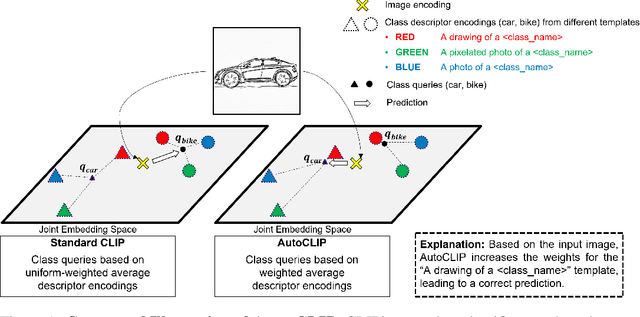

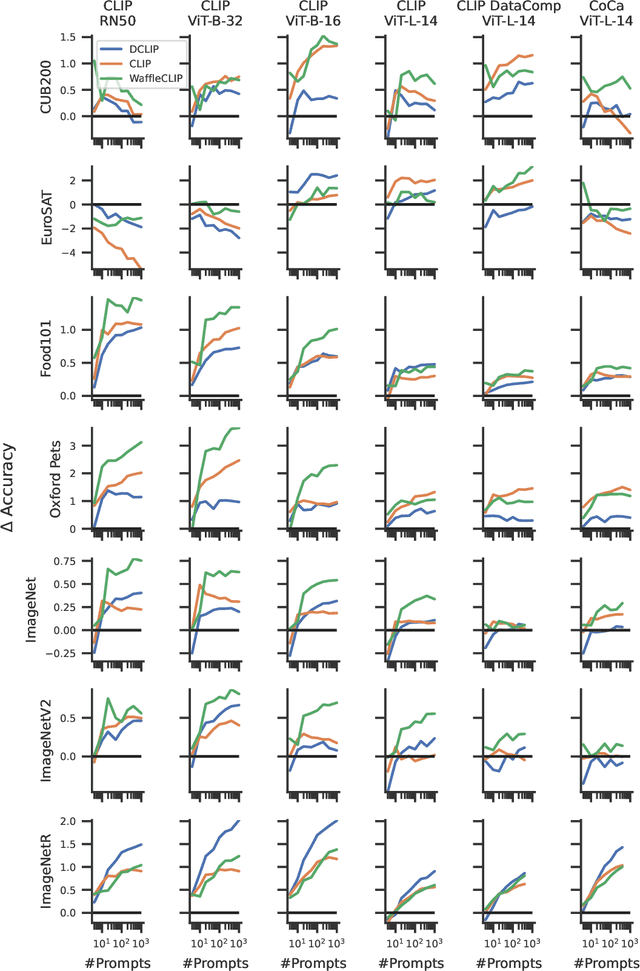

Abstract:Classifiers built upon vision-language models such as CLIP have shown remarkable zero-shot performance across a broad range of image classification tasks. Prior work has studied different ways of automatically creating descriptor sets for every class based on prompt templates, ranging from manually engineered templates over templates obtained from a large language model to templates built from random words and characters. Up until now, deriving zero-shot classifiers from the respective encoded class descriptors has remained nearly unchanged, i.e., classify to the class that maximizes cosine similarity between its averaged encoded class descriptors and the image encoding. However, weighing all class descriptors equally can be suboptimal when certain descriptors match visual clues on a given image better than others. In this work, we propose AutoCLIP, a method for auto-tuning zero-shot classifiers. AutoCLIP tunes per-image weights to each prompt template at inference time, based on statistics of class descriptor-image similarities. AutoCLIP is fully unsupervised, has very low computational overhead, and can be easily implemented in few lines of code. We show that AutoCLIP outperforms baselines across a broad range of vision-language models, datasets, and prompt templates consistently and by up to 3 percent point accuracy.
Identifying Systematic Errors in Object Detectors with the SCROD Pipeline
Sep 23, 2023Abstract:The identification and removal of systematic errors in object detectors can be a prerequisite for their deployment in safety-critical applications like automated driving and robotics. Such systematic errors can for instance occur under very specific object poses (location, scale, orientation), object colors/textures, and backgrounds. Real images alone are unlikely to cover all relevant combinations. We overcome this limitation by generating synthetic images with fine-granular control. While generating synthetic images with physical simulators and hand-designed 3D assets allows fine-grained control over generated images, this approach is resource-intensive and has limited scalability. In contrast, using generative models is more scalable but less reliable in terms of fine-grained control. In this paper, we propose a novel framework that combines the strengths of both approaches. Our meticulously designed pipeline along with custom models enables us to generate street scenes with fine-grained control in a fully automated and scalable manner. Moreover, our framework introduces an evaluation setting that can serve as a benchmark for similar pipelines. This evaluation setting will contribute to advancing the field and promoting standardized testing procedures.
Identification of Systematic Errors of Image Classifiers on Rare Subgroups
Mar 09, 2023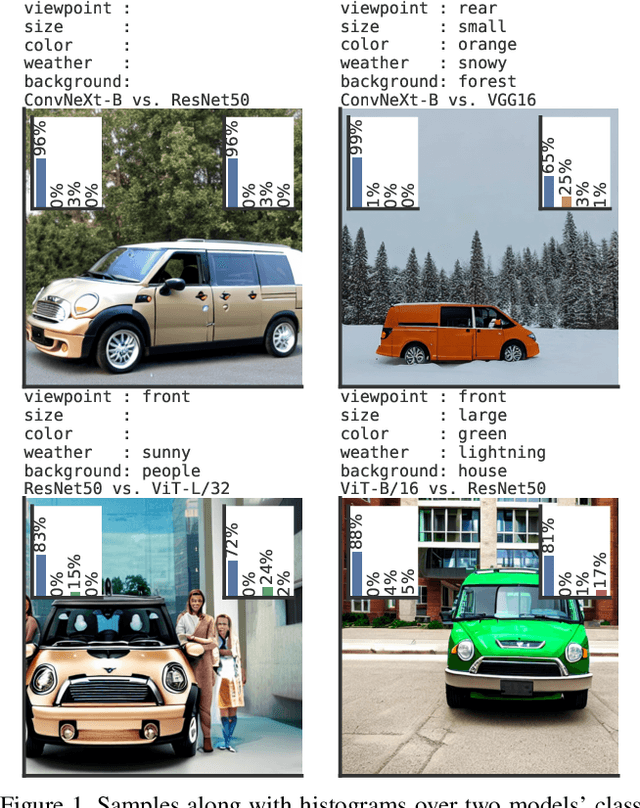



Abstract:Despite excellent average-case performance of many image classifiers, their performance can substantially deteriorate on semantically coherent subgroups of the data that were under-represented in the training data. These systematic errors can impact both fairness for demographic minority groups as well as robustness and safety under domain shift. A major challenge is to identify such subgroups with subpar performance when the subgroups are not annotated and their occurrence is very rare. We leverage recent advances in text-to-image models and search in the space of textual descriptions of subgroups ("prompts") for subgroups where the target model has low performance on the prompt-conditioned synthesized data. To tackle the exponentially growing number of subgroups, we employ combinatorial testing. We denote this procedure as PromptAttack as it can be interpreted as an adversarial attack in a prompt space. We study subgroup coverage and identifiability with PromptAttack in a controlled setting and find that it identifies systematic errors with high accuracy. Thereupon, we apply PromptAttack to ImageNet classifiers and identify novel systematic errors on rare subgroups.
Certified Defences Against Adversarial Patch Attacks on Semantic Segmentation
Sep 13, 2022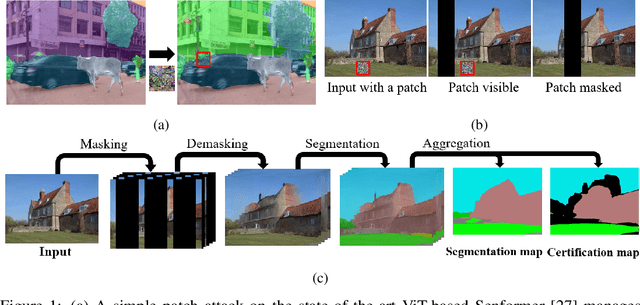
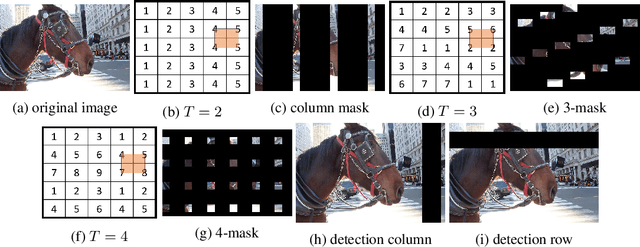
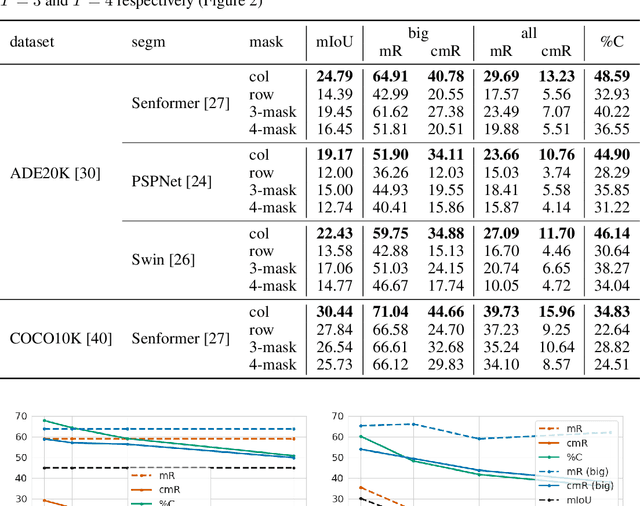
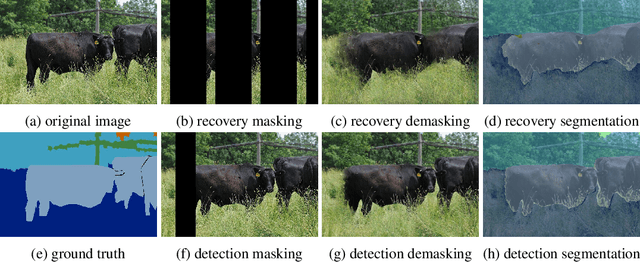
Abstract:Adversarial patch attacks are an emerging security threat for real world deep learning applications. We present Demasked Smoothing, the first approach (up to our knowledge) to certify the robustness of semantic segmentation models against this threat model. Previous work on certifiably defending against patch attacks has mostly focused on image classification task and often required changes in the model architecture and additional training which is undesirable and computationally expensive. In Demasked Smoothing, any segmentation model can be applied without particular training, fine-tuning, or restriction of the architecture. Using different masking strategies, Demasked Smoothing can be applied both for certified detection and certified recovery. In extensive experiments we show that Demasked Smoothing can on average certify 64% of the pixel predictions for a 1% patch in the detection task and 48% against a 0.5% patch for the recovery task on the ADE20K dataset.
Give Me Your Attention: Dot-Product Attention Considered Harmful for Adversarial Patch Robustness
Mar 25, 2022
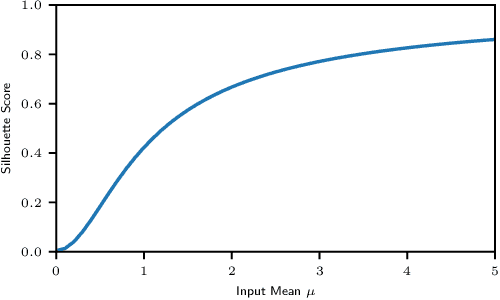

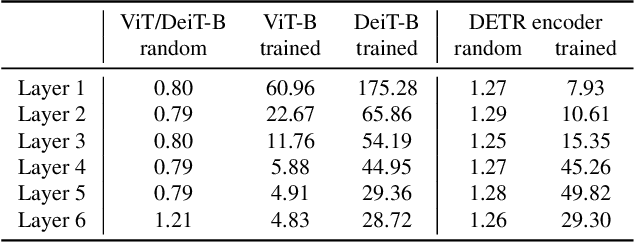
Abstract:Neural architectures based on attention such as vision transformers are revolutionizing image recognition. Their main benefit is that attention allows reasoning about all parts of a scene jointly. In this paper, we show how the global reasoning of (scaled) dot-product attention can be the source of a major vulnerability when confronted with adversarial patch attacks. We provide a theoretical understanding of this vulnerability and relate it to an adversary's ability to misdirect the attention of all queries to a single key token under the control of the adversarial patch. We propose novel adversarial objectives for crafting adversarial patches which target this vulnerability explicitly. We show the effectiveness of the proposed patch attacks on popular image classification (ViTs and DeiTs) and object detection models (DETR). We find that adversarial patches occupying 0.5% of the input can lead to robust accuracies as low as 0% for ViT on ImageNet, and reduce the mAP of DETR on MS COCO to less than 3%.
 Add to Chrome
Add to Chrome Add to Firefox
Add to Firefox Add to Edge
Add to Edge